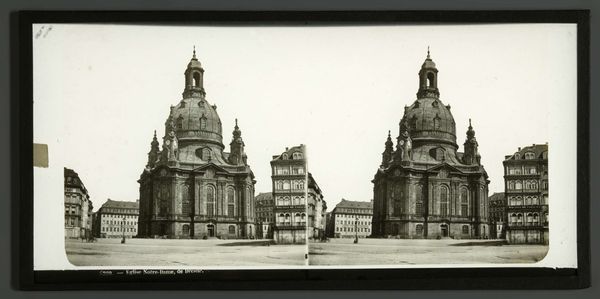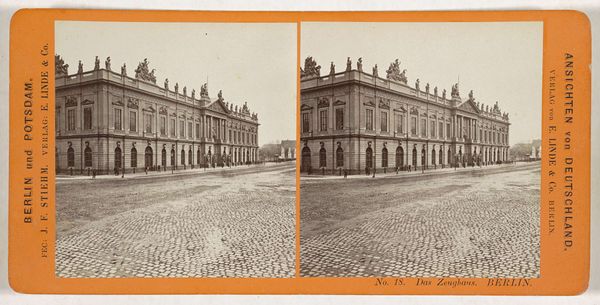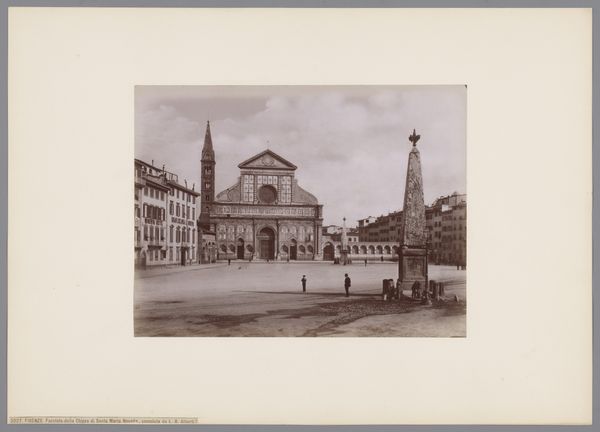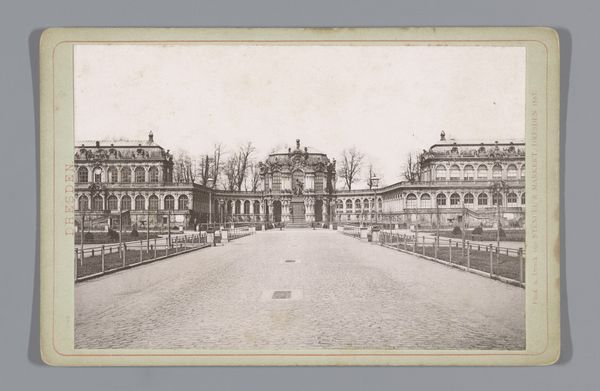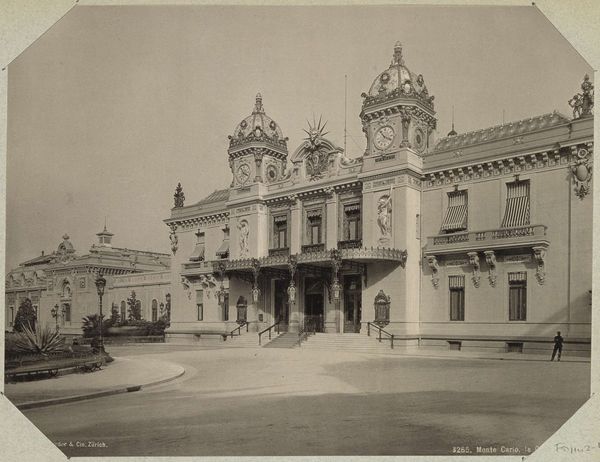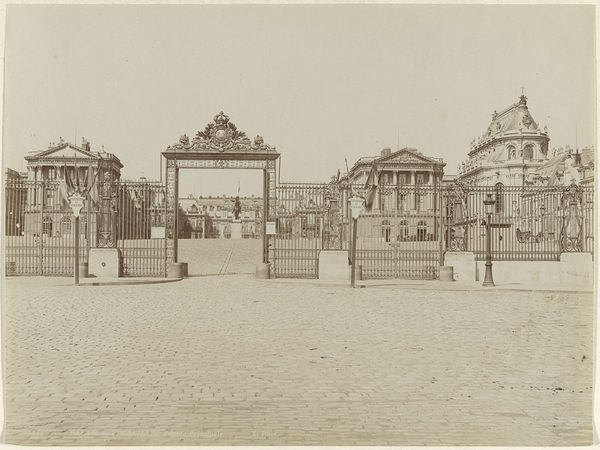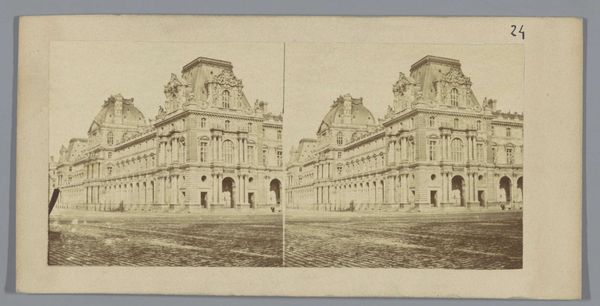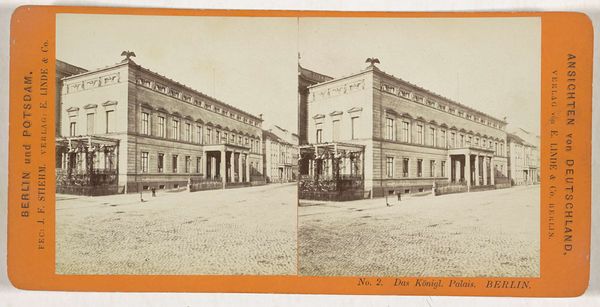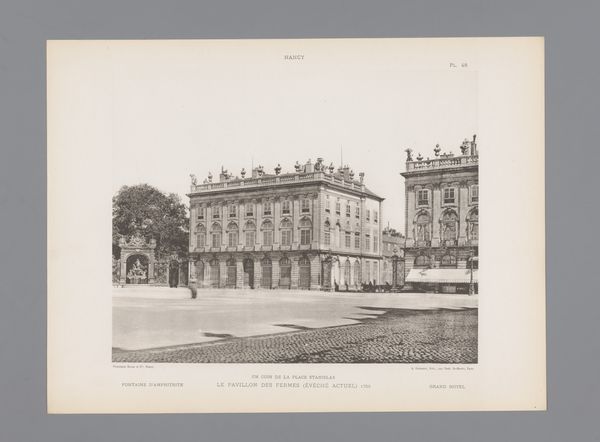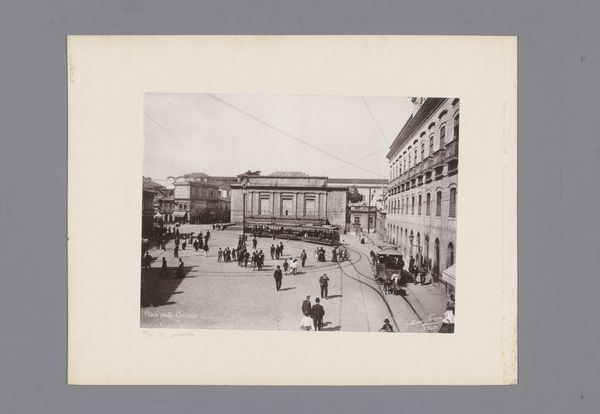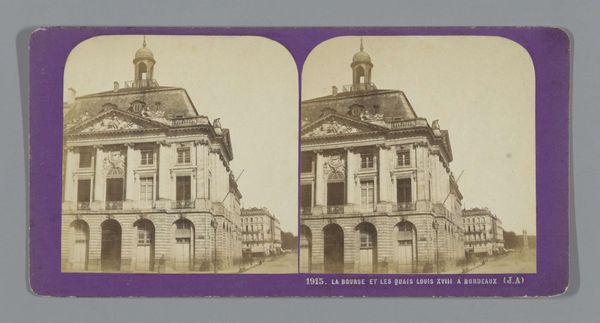
print, photography
# print
#
photography
#
cityscape
#
realism
Dimensions: height 85 mm, width 170 mm
Copyright: Rijks Museum: Open Domain
Curator: This black and white photographic print, created sometime between 1860 and 1890, captures "Gezicht op een plein in Stuttgart" or "View of a Square in Stuttgart," and is attributed to Ferrier Pére-Fils et Soulier. Editor: There's a certain hushed formality evoked by the photograph's monotone palette. The vast emptiness of the square amplifies the buildings' structured composure. The almost clinical rendition creates a striking interplay between grand civic design and the solitude within it. Curator: Indeed, the meticulous organization of the buildings flanking the empty square emphasizes a controlled use of line, with receding perspective creating depth. It strikes me how the interplay of light and shadow accentuates the neoclassical symmetry that informs the urban design. The photographic print presents a precise articulation of architectural components, wouldn’t you agree? Editor: I do, but I am more moved by the palpable silence. It reminds me of similar cityscapes captured in other photographic prints of this era. There is always a ghostly feeling – the people present are always mere blurs in this technology because of exposure times, leaving their purpose a symbolic mystery for us. In this particular instance, the architecture echoes ideals of civic power and authority but simultaneously highlights individual insignificance in comparison. The square is bereft of the vibrant, chaotic life we might expect today. Curator: Very interesting interpretation! From a purely aesthetic perspective, this artistic capture embodies elements characteristic of Realism. This is particularly evident in the sharp detailing of the stonework, window arrangements, and ornamentation on the facades. The composition's visual clarity invites closer examination of how the photographer harnesses form to communicate about space. Editor: I find the buildings and architecture also signal a visual motif of early urban life and culture of that time period, especially among ruling class patrons. Squares like this were very well maintained because the palace overlooked the space; any mess would be like looking at a mistake, in the eye of a Royal! Curator: Well said. After carefully considering these elements, the spatial and formal tensions in the image reflect how urban design encodes historical significance. Editor: Yes. By diving into those intricacies and symbolism embedded in these scenes from history, this particular image sparks curiosity that will make people seek out the story, which brings it all full circle!
Comments
No comments
Be the first to comment and join the conversation on the ultimate creative platform.
